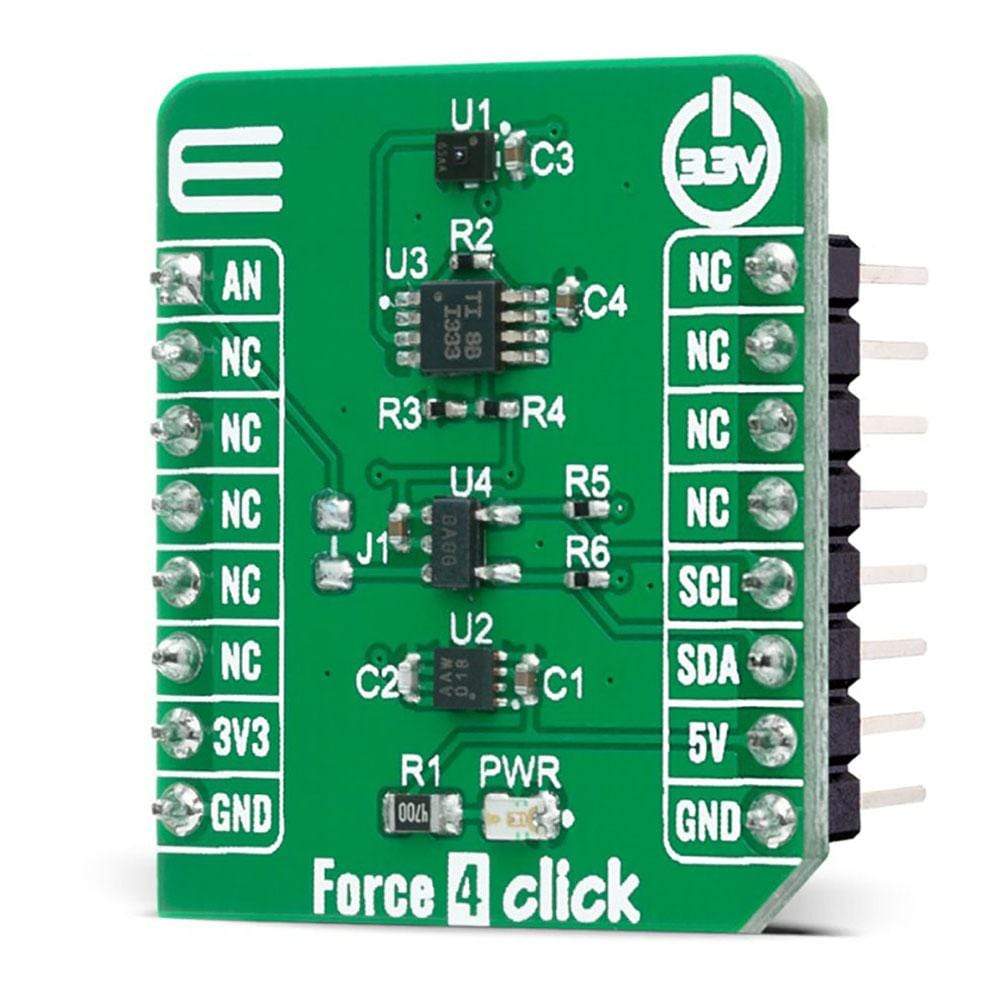
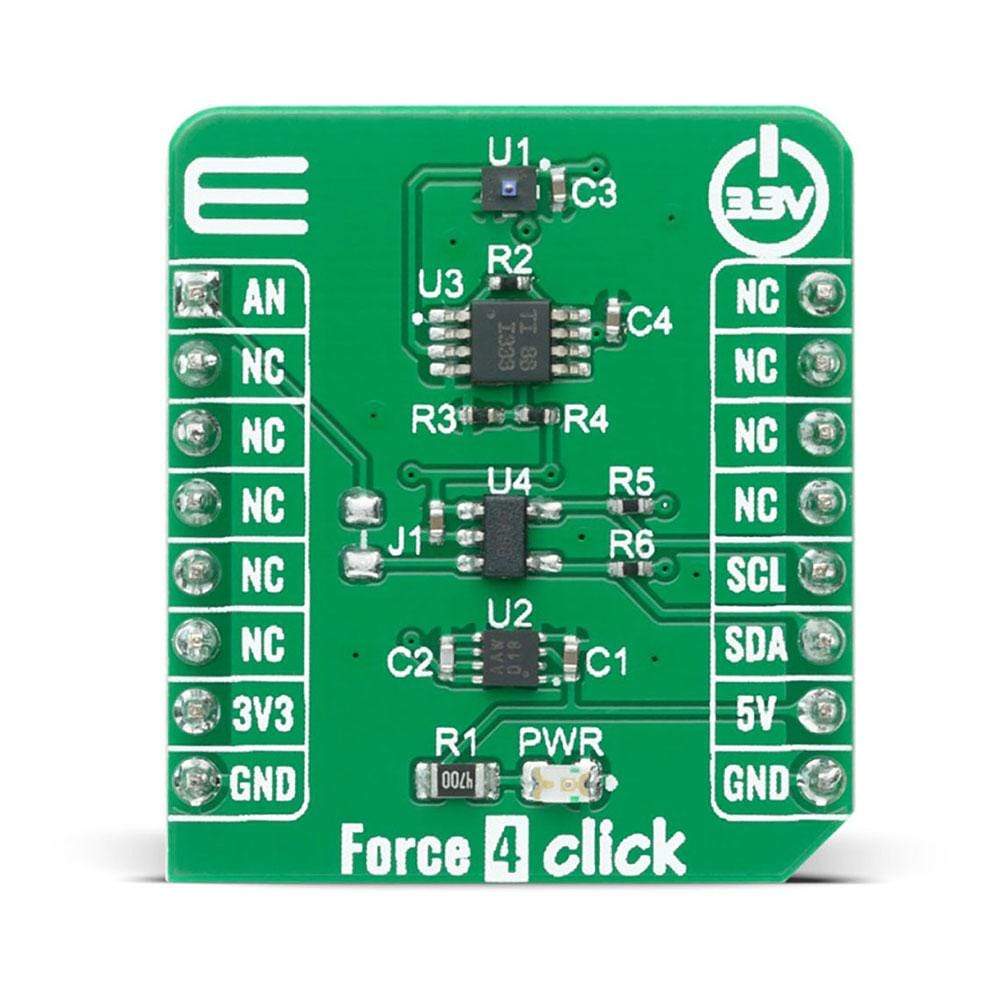
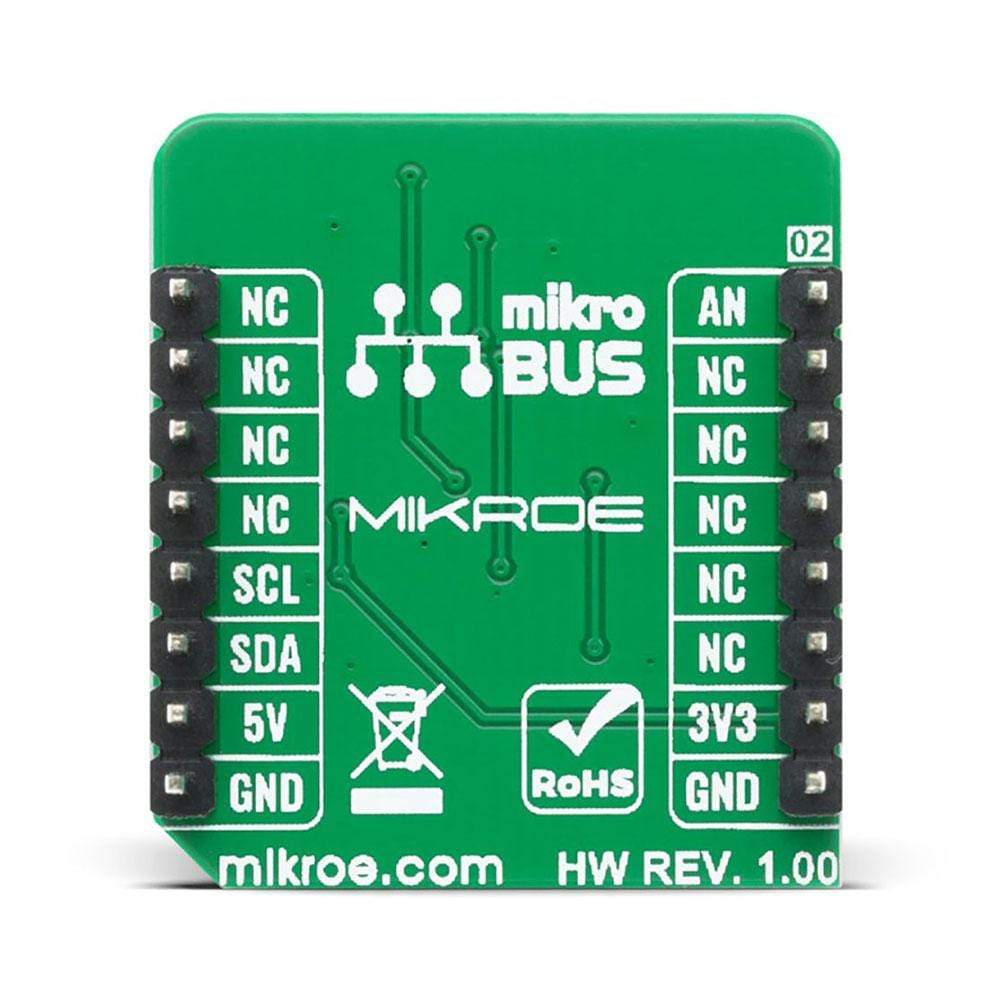
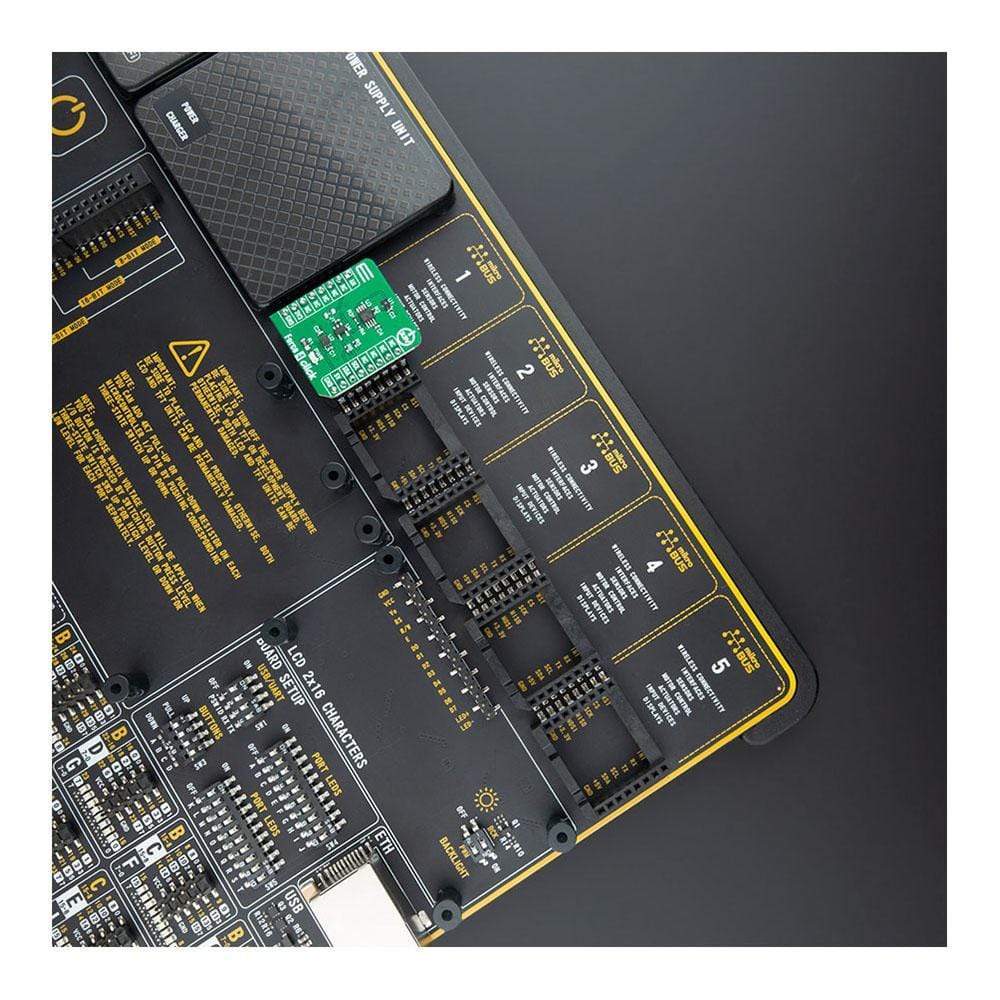
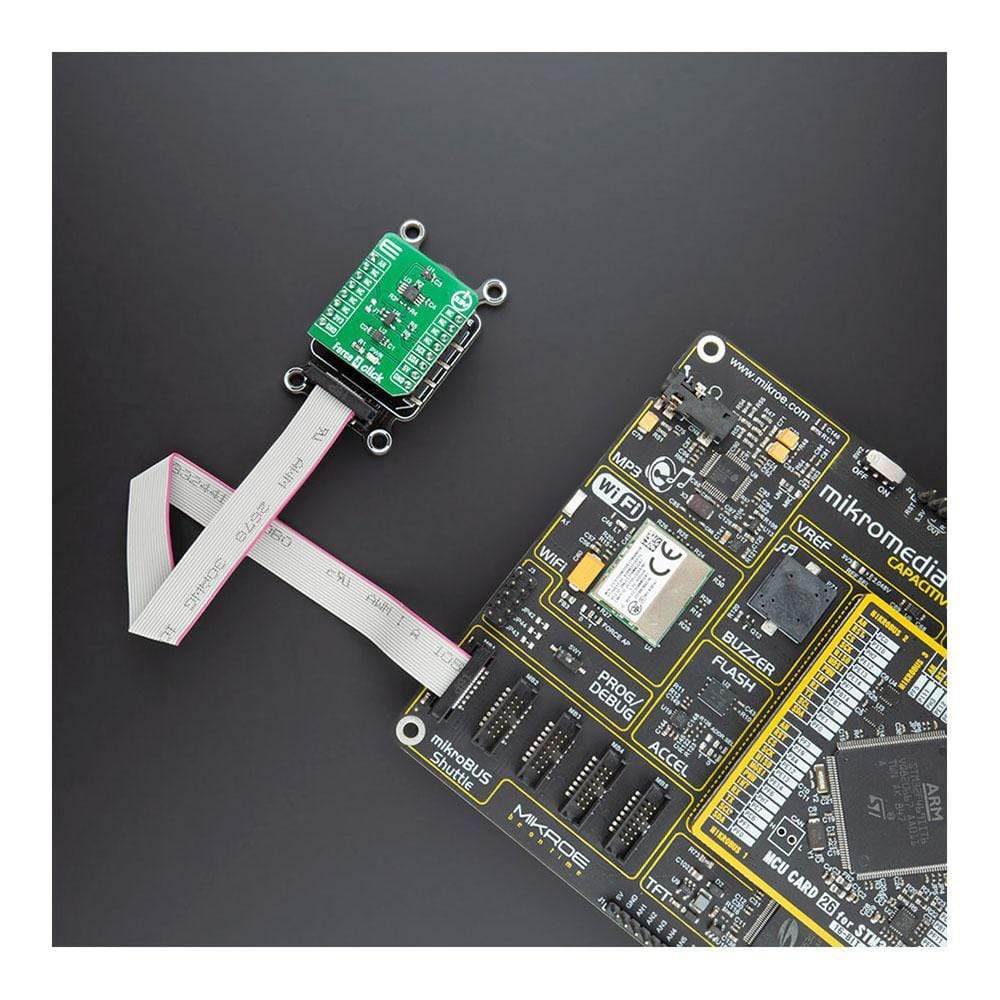
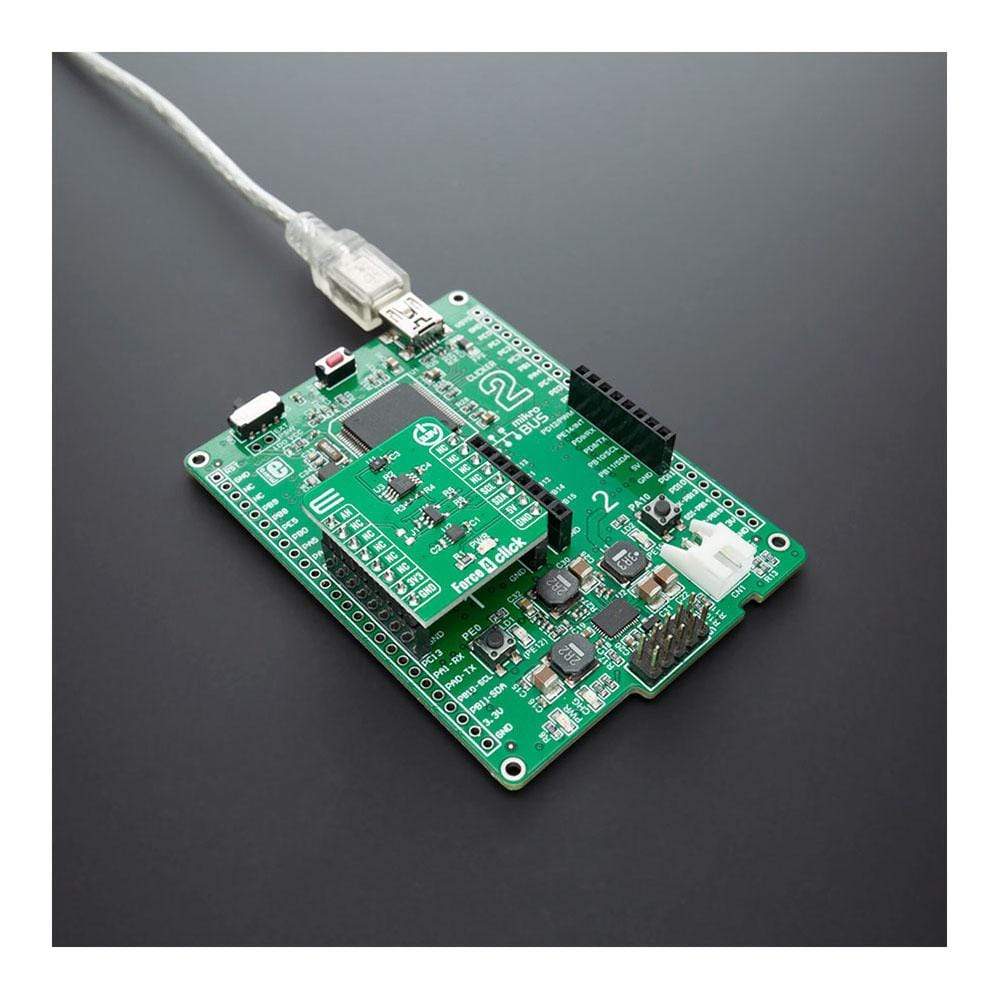
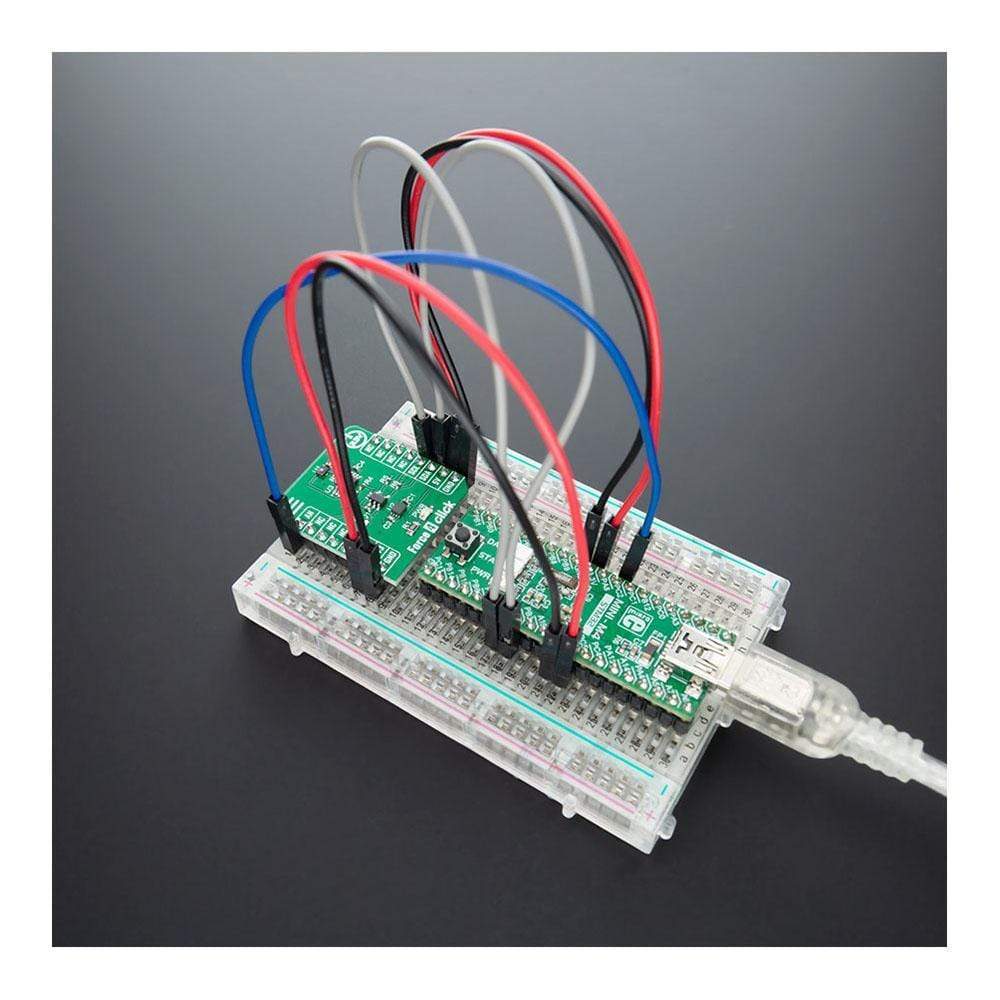
Overview
The Force 4 Click Board™ is based on HSFPAR003A piezoresistive force sensor from Alpsalpine. This product is a force sensor using the effect of a piezoresistive bridge circuit formed on a silicon diaphragm. Piezoresistive force sensors achieve higher linearity than other force sensors.
To help with stability and accuracy Force 4 Click Board™ also includes MCP1101-33 a high precision buffered voltage reference as a power supply to a force sensor that allows high stability and accuracy of output voltage readings.
Downloads
Das Force 4 Click Board™ basiert auf dem piezoresistiven Kraftsensor HSFPAR003A von Alpsalpine. Bei diesem Produkt handelt es sich um einen Kraftsensor, der den Effekt einer piezoresistiven Brückenschaltung nutzt, die auf einer Siliziummembran gebildet ist. Piezoresistive Kraftsensoren erreichen eine höhere Linearität als andere Kraftsensoren.
Zur Verbesserung der Stabilität und Genauigkeit enthält Force 4 Click Board™ außerdem MCP1101-33, eine hochpräzise gepufferte Spannungsreferenz als Stromversorgung für einen Kraftsensor, die eine hohe Stabilität und Genauigkeit der Ausgangsspannungswerte ermöglicht.
| General Information | |
|---|---|
Part Number (SKU) |
MIKROE-4193
|
Manufacturer |
|
| Physical and Mechanical | |
Weight |
0.016 kg
|
| Other | |
Country of Origin |
|
HS Code Customs Tariff code
|
|
EAN |
8606018717934
|
Warranty |
|
Frequently Asked Questions
Have a Question?
Be the first to ask a question about this.







